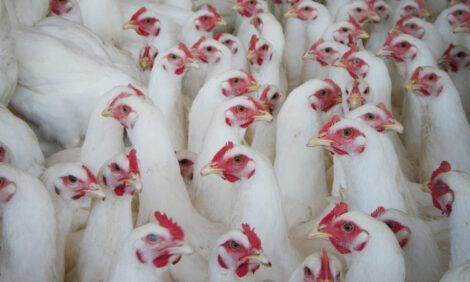



Brooding Turkeys Successfully
By Dan Cunningham from the University of Georgia. Published in the September 2002 issue of Backyard Flock Tips.Many people raise small flocks of turkeys for personal pleasure or as a home grown product for the holiday season. Turkeys can be grown successfully in a wide range of environments and climatic conditions as long as their basic needs for growth are met and adequate care is provided. Turkeys can be more challenging to raise than chickens as they are more vulnerable to their environment during the first few weeks. Mortality can be high if they have poor care resulting in chilling, piling, eating litter, starvation or dehydration.
The following information can help ensure a healthy, fast growing flock:
Brooder Management
The first few weeks of a poult's life are critical to raising a healthy flock. Providing a good brooding environment is essential to this process. Buildings of practically any type can be used to brood turkeys as long as the birds are kept warm, dry and free of drafts. Use the check list below to help get your poults off to a fast start.
- Provide 1.5 to 2.0 square feet of floor space per poult for the first six to eight weeks of age. Providing adequate space will prevent crowding and result in better livability and growth performances.
- Before poults arrive, thoroughly clean and disinfect the brooder house. Remove all equipment and wash the house with soap and water, rinsing and sanitizing with an approved agent. A strong household disinfectant such as Lysol or chlorine bleach and water can be used as sanitizing agents. Let the house dry for a minimum of three days before placing poults.
- Cover the floor with three to five inches of clean, dry absorbent litter. Wood shavings, crushed corn cobs, peanut hulls, straw or other materials can be used. The litter can be covered with paper the first three to five days to prevent the poults from eating the litter. This will help prevent the poults from consuming the litter rather than feed (starve-outs) during the first week.
- Provide heating by use of infrared bulbs or electric brooders if available. It is important to maintain a 95 degree F temperature at poult height for the first week. Brooding temperatures can be reduced 5 degrees weekly thereafter by raising the height of the infrared bulb or adjusting the brooders. By four to six weeks of age, poults should not need supplemental heat.
- Brooder guards can be used to protect poults from drafts and will keep the birds near the warmth of the brooder. A one to two foot high brooder guard of cardboard arranged in a circle four feet from the center of the brooder will work well.
- Arrange feeders and waterers like spokes of a wheel within the brooding area but not directly under the heat source. This will keep the feed and water in close proximity to warmth of the brooder where the poults can feed easily. This is important in preventing chilling and, at the same time, getting the birds eating quickly. Feed can also be placed on temporary cardboard feeders or directly on paper for the first few days to get poults eating quickly. Trough or round feeders will work well after the first couple of days. Provide poults one linear inch of feeder space per bird and have feed available at all times. As the poults get older, feeder space may need to increase to 2-3 linear inches per bird. Feeds formulated for turkeys are preferable, however, high protein (23-24%) broiler chicken feeds may be used as a substitute, if necessary.
- It is important that poults begin drinking immediately. Provide enough glass jars or plastic water devices to ensure access to water for at least a 24 hour period during brooding. The poults may need help locating the water. Dipping the beaks of a few of the birds in the water will help them start drinking. Once a few of the poults are drinking, the others will soon copy their behavior. Clean waterers daily.
- Check on poults often during the first few days. When comfortable the birds will be evenly distributed under the brooding area. If poults are huddling and piling, the brooding area is too cool. Poults that are constantly on the edges of the brooding area are probably too hot and trying to get away from the heat source.
- Brooder guards can be removed after six or seven days. However, during cold weather it may be necessary to keep the brooder guard in place longer to protect the young birds. If necessary, brooder guards can be enlarged to provide more room for the poults as they grow.
Regardless of how you grow your turkeys, keep in mind, the first few days and weeks of brooding are critical to producing a healthy and prosperous flock.
Dan L. Cunningham is Extension Coordinator-Poultry Science at the University of Georgia, USA.
November 2008











